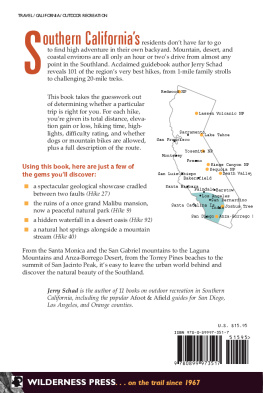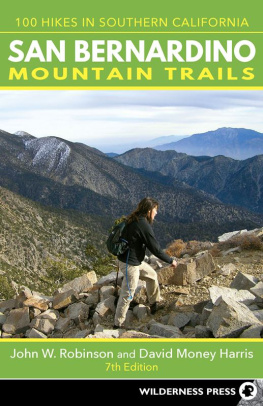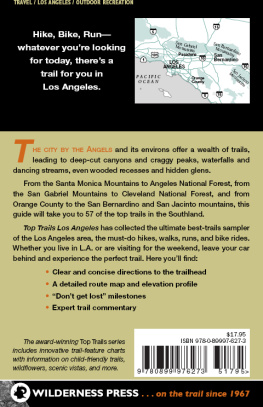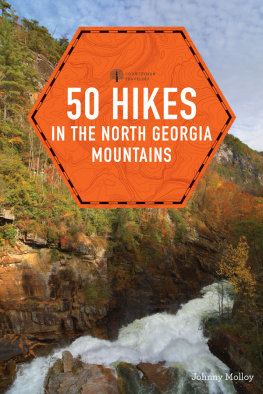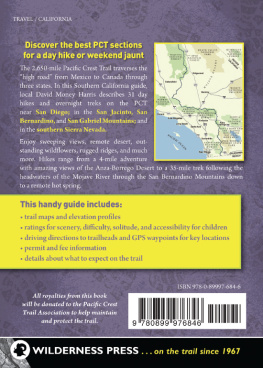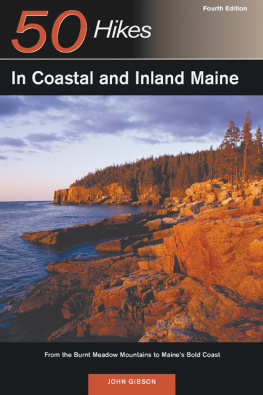
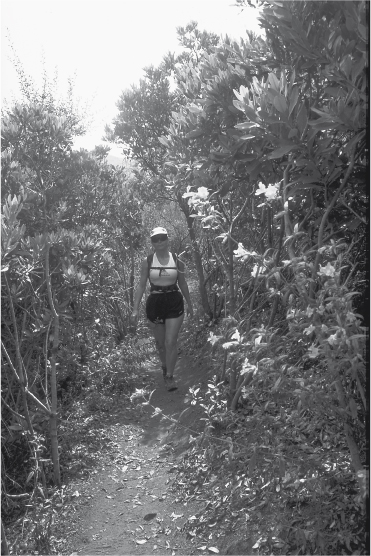

101 Hikes in Southern California
1st EDITION July 1996
2nd EDITION February 2005
5th printing 2011
Copyright 1996, 2005 by Jerry Schad
Front cover photos copyright 2005 by Jerry Schad
Interior photos: Jerry Schad
Maps: Jerry Schad
Cover and book design: Larry B. Van Dyke
Book editor: Roslyn Bullas
ISBN 978-0-89997-351-7
Manufactured in the United States of America
| Published by: | Wilderness Press |
| c/o Keen Communications |
| PO Box 43673 |
| Birmingham, AL 35243 |
| (800) 443-7227; FAX (205) 326-1012 |
| www.wildernesspress.com |
Visit our website for a complete listing of our books and for ordering information.
Distributed by Publishers Group West
| Cover photos: | California poppies and Englemann oak (background); |
| West shoulder of Whale Peak, Anza-Borrego Desert State Park (top inset); |
| Holy Jim Falls, Cleveland National Forest (bottom inset) |
| Frontispiece: | Hiking through chaparrel, |
| Santa Monica Mountains National Recreation Area |
All rights reserved. No part of this book may be reproduced in any form, or by any means electronic, mechanical, recording, or otherwise, without written permission from the publisher, except for brief quotations used in reviews.
SAFETY NOTICE: Although Wilderness Press and the author have made every attempt to ensure that the information in this book is accurate at press time, they are not responsible for any loss, damage, injury, or inconvenience that may occur to anyone while using this book. You are responsible for your own safety and health. The fact that a trail is described in this book does not mean that it will be safe for you. Be aware that trail conditions can change from day to day. Always check local conditions and know your own limitations.
Preface
Just beyond the limits of Southern Californias ever-spreading urban sprawl lies a world apart. In snippets of open space here, and in sprawling wilderness areas there, Californias primeval landscape survives more or less untarnished. In hundreds of hidden places just over the urban horizon (and sometimes within the cities themselves), you can still find Natures radiant beauty unfetteredor at least not too seriously compromisedby human intervention.
My purpose in writing this book is to entice you to explore some of these hidden places. In the pages ahead you will find updated versions of trips previously published in my Afoot & Afield series of guidebooks on Los Angeles, Orange, and San Diego counties, plus additional trips from eastern Ventura County, western San Bernardino County, and western Riverside Countya total of 101 hikes described in detail. The reveals how the majority of hikes chosen for this book cluster around the major urban areas of Los Angeles, Orange County, and San Diego. As a result, no matter where you live within Southern California, it is likely that 50 or more of these hikes are accessible to you in less than a two-hour drive.
Users of the Afoot & Afield books will already be familiar with the format and layout of this book. Each hike description includes a capsulized summary with icons allowing you to determine at a glance the nature and difficulty of the trip. Each trip is plotted on an easy-to-read sketch map. Photos of scenery and interesting features on or near the trails are sprinkled throughout the book.
All hikes described in this book were hiked at least once by me at one time or another, and every effort has been made to ensure that the information contained herein is up-to-date. Roads, trailheads, and trails can and do change every year, however. You can keep me apprised of recent developments and/or changes by writing me in care of Wilderness Press, or e-mailing me at schadj@worldnet.att.net. Your comments will be appreciated.
Jerry Schad
La Mesa, California
December 2004

Lower Big Morongo Canyon ()
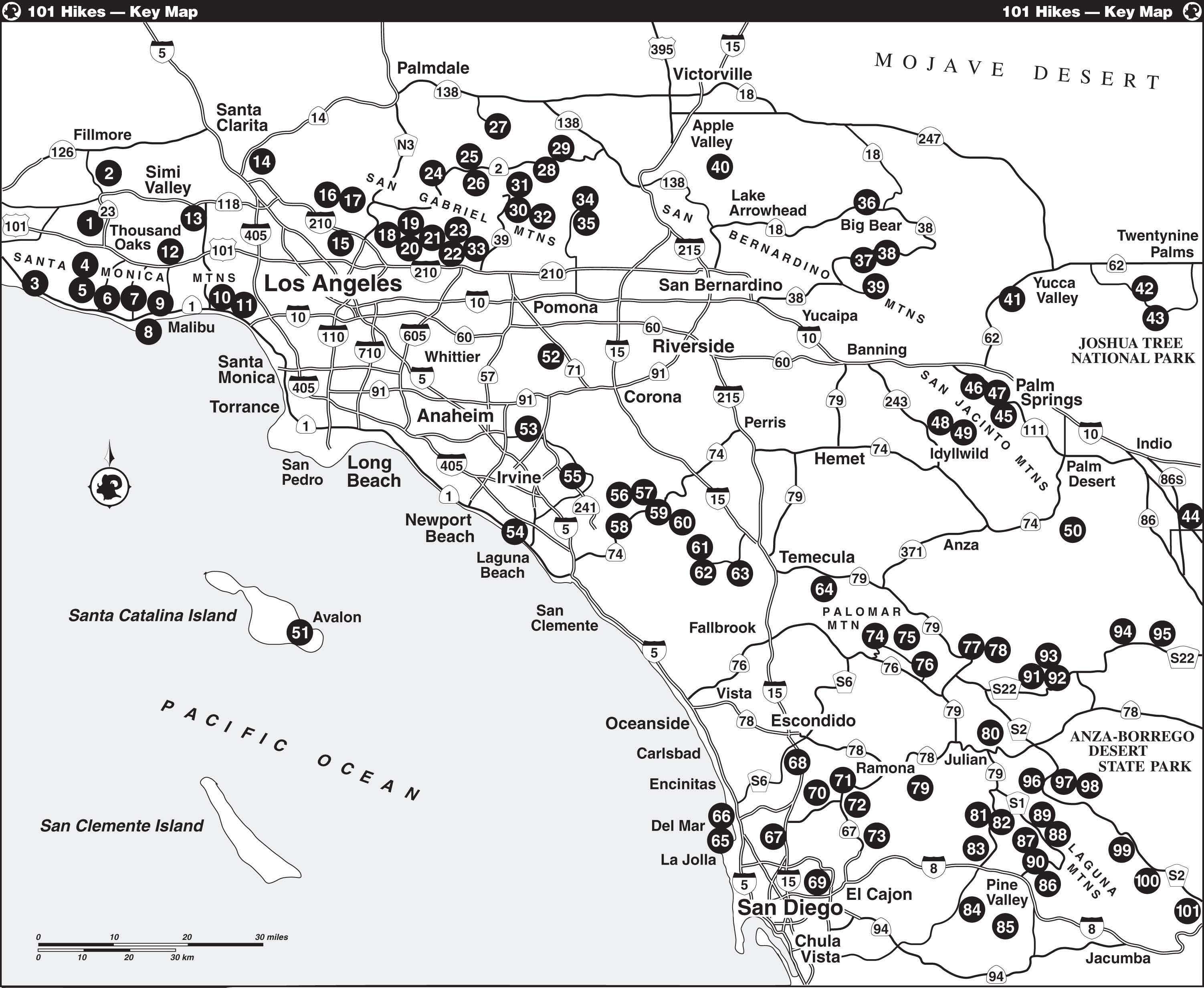

Southern Californias Wilderness Rim
S outhern California sits astride one of the earths most significant structural featuresthe San Andreas Fault. For more than 10 million years, earth movements along the San Andreas and neighboring faults have shaped the dramatic topography evident throughout the region today. The very complexity of the shape of the land has spawned a variety of localized climates. In turn, the varied climates, along with the diverse topography and geology, have resulted in a remarkably plentiful and diverse array of plant and animal life.
Living on the active edge of a continent has advantages and disadvantages that cannot be untangled. Like the proverbial silver lining in a dark cloud, the rumpled beauty of our youthful, ever-changing coastline, mountains, and desert redresses the ever-present threat of earthquakes, fires, and floods. Because much of Southern California is physically rugged, not all of it has succumbed to the plow or the bulldozer. When youve had the pleasure of hiking beside a crystal-clear mountain stream minutes from downtown L.A., or cooling off in the spray of a cottonwood-fringed waterfall just beyond suburban San Diego, youll realize that not many regions in the world offer so great a variety of natural pleasures to a population of many millions.
Let us, in the next couple of pages, briefly explore the principal wild and semiwild natural areas bordering Southern Californias coastal plain. When linked together, these natural areas form a broad, curving crescent around Southern Californias urban populationnow more than 20 million strong. About 90 percent of the hikes found in this book fall into this unpopulated or sparsely populated crescent.

Los Angeles on a clear day from the Sam Merrill Trail ()
The Santa Monica Mountains
We start with the Santa Monica Mountains, which rise abruptly from the Pacific shoreline west of (or up the coast from) Los Angeles. They, along with the San Gabriel and San Bernardino mountains, are part of the Transverse Ranges, so named because they trend east-west and stand crosswise to the usual northwest-southeast grain of nearly every other major mountain range in California. This anomaly, it is thought, is largely due to compression along the San Andreas Fault. There is a kink in the San Andreas Fault north of Los Angeles where the fault, running southeast from the San Francisco Bay Area, jogs east for a while before resuming its course toward the southeast. Compression against this kink has caused the land south of it to crumple and wrinkle upward. The devastating January 1994 Northridge earthquake was just one small episode in the slow but fitful uplift of the Transverse Ranges.

